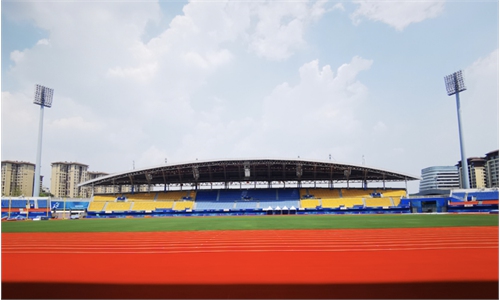ARTS / ART
China’s strong momentum in winter sports continues

Illustration: Liu Xiangya/Global Times
China's international winter sports story is continuing. Following the 2022 Beijing Winter Olympics, Harbin, capital of Northeast China's Heilongjiang Province, has been elected to host the 2025 Asian Winter Games by the Olympic Council of Asia (OCA).This will become a new starting point for propelling forward winter sports and promoting mass fitness in the country.
This will be the second time that Harbin, nicknamed "Ice City" in China, will host the Asian Winter Games after the first one in 1996, and the third time that the regional Games will be held in a Chinese city, the other being Changchun in neighboring Jilin Province in 2007.
In addition, Shanghai and Beijing will host the Four Continents Figure Skating Championships in 2024 and 2026 respectively. The capital city is also slated to hold this year's short track speed skating World Cup series and the 2025 short track world championships.
In August, China's women's ice hockey team will play their World Championship Division I, Group A games at home in Shenzhen, South China's Guangdong Province.
During the ongoing ice hockey competitions for the 2024 Chinese National Winter Games in Hulun Buir, North China's Inner Mongolia Autonomous Region, debutants Guangdong won the gold medal in the women's competition, while winter sports newcomers Sichuan and Shanghai, where ice and snow are rare, also made appearances.
After the Beijing Winter Olympics placed the country on the fast track for winter sports, the influx of these future international events is sure to help maintain that momentum.
According to a report released in February by the International Olympic Committee on the one-year anniversary of the Beijing Games, 346 million Chinese have taken part in winter sports since Beijing's successful bid for the Games in 2015, creating lasting, wide-ranging social and economic benefits for local people.
The winter sports industry has been booming across China thanks to Beijing 2022. Winter sports have also taken root in areas like the South China province of Guangdong.
In the past, winter sports were largely played in colder regions such as the provinces of Heilongjiang, Jilin and Liaoning in Northeast China and Northwest China's Xinjiang region, but recently have become more common elsewhere thanks to the use of man-made snow and ice.
Some 5,000 schools across China are expected to include winter sports in their curriculum by the end of 2025 in an effort to entice the younger generation to take part in ice and snow sports, the report said.
According to the China Tourism Academy, during the 2024-25 ice and snow season, China's winter leisure tourism sector is expected to welcome over 520 million visitors and earn revenue of more than 720 billion yuan (around $107 billion).
"The Beijing Games have taken China's winter sports to a new height in terms of scale and quality, establishing a solid foundation for the sustainable development of winter sports across the country," said Zou Xinxian, a professor with Beijing Sport University, who is also the leading author of the Legacy Report of Beijing 2022 Winter Olympics and Paralympics.
"It's one of our long-term national policies to popularize winter sports and promote the high-quality development of mass fitness."
The Beijing 2022 Olympics created a wealthy legacy in sports, economics, society, culture, environment and city development.
This invaluable legacy plays a positive role in the development of China's winter sports and will make an impact on the 2025 Asian Winter Games in Harbin.
Zhang Guihai from the Heilongjiang Ice and Snow Industry Research Institute said hosting the Asian Winter Games in Harbin is a testament to the fast development of China's winter sports, but there is still huge potential in popularizing them across China.
Skiing, representing the bulk of China's winter sports market, has become a more popular sport in the country thanks to the dazzling performances by star athletes Su Yuming and Gu Ailing during the Beijing Olympics.
The number of skiers across China has steadily increased from 12.5 million in 2015 to about 25 million in 2022, according to a report by the General Administration of Sport in 2022. Yet, there is still untapped market in western and southern Chinese cities.
Apart from hosting international events, more winter sports events aimed at youths are needed to help the younger generation engage in winter sports, as the venues built for international events could also continue to serve the local population throughout the year.



